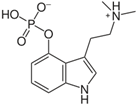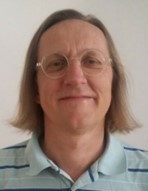
Brain Predictors
Supporting Mental Health Drug Development
With Computer Simulations of Brain Dynamics
GOALS
We will use computational neuroscience – computer simulations of brains – to predict the effects of neuropharmacological drugs in much finer detail than previously possible.
Our predictions will inform drug manufacturers, but also clinicians and patients alike, and potentially increase drug efficiency & reduce side-effects.
WHAT WE EXPLAIN
While neuropharmacological approaches are very promising for the treatment of a variety of psychiatric conditions, they sometimes operate with somewhat of a “black-box” approach: the drugs help patients, but it is often not completely certain why and how.
We aim to be very specific in our predictions about the influence of neuropharmacological substances on mental health. Using computer simulations, we want to understand the mechanisms and dynamics of drug action in human brains. Specifically, we want to answer, how psychedelic therapy interacts with:
- Day/night differences in brain activity
- Different behavioral states: calm wakefulness/rest, active states, socially challenging situations
- Acute relapses versus controlled states of mental health problems
- Alcohol and nicotine
- Other psychiatric medications
- Developmental changes: puberty, old age, dementias
And what are its:
- Long-term effects, side effects
- Habituation and needed dosage changes
OUR APPROACH
In brief: We simulate what is going on in the brain and use these simulations to inform which neuropharmacological substances patients should take when, and in what doses,
More technically: We use multi-level modeling, the technique to simulate brain dynamics by taking into account processes on different spatial scales (neurotransmitter receptors, brain cells, brain regions, the whole brain) and temporal scales (neurotransmitter action at a fraction of a second to developmental changes happening over years).
In subsequent future steps, we aim to use non-linear time series analysis for the analysis of patient EEG, and natural language analysis, for the analysis of patient verbal output to further fine-tune our therapeutic predictions and recommendations.
SCIENCE COMMUNICATION
We realize that while our plans are potentially very useful for the advanced treatment of mental health conditions, they are not very easy to understand for the layperson. We plan to make an intensive effort to explain our insights in a way accessible to non-experts. This will make our services an easier sell. We are experts in science communication.
CONCRETE RECOMMENDATIONS
Our goal is to provide concrete, quantitative recommendations for the use of neuropharmacological treatments. This will include advice on doses, daily pharmacological regiments, drug intervention based on behavioral and relapse-related states, as well as long-term dose management. We are not medical doctors, but we will work with them, and point out our insights in dose/response curves, synergies, interactions with the sleep/wake cycle and so on.
A DEMONSTRATION CASE
We are currently working on a proof-of concept model of human sleep, and how several compounds influence it.
The basis of the model are the well characterized sleep oscillators, with well characterized responses to perturbations at different phases of the sleep/wake cycle. The next level, simulated by us in more detail, are the modulators affecting sleep such as caffeine and melatonin, and their receptors. The uptake, decay/degradation of these sleep modulators, and their synergies are simulated in detail.
This model will serve as a proof of concept, being able to predict effects of two commonly used sleep-modulating substances. The model will serve as a future baseline model for well running and disturbed sleep, the latter either due to mental health issues, or due to the side effects of neuropharmacological drugs.
PSYCHEDELIC MEDICINE
A very promising sub-field of neuropharmacological development which is currently blossoming is “psychedelic medicine”. This field uses traditional psychedelics under controlled conditions for mental health improvement. While we believe that some of the field’s successes are very promising, it especially seems to be working under a black box paradigm (“it works, we are not sure why”). We can help change this situation for the better by working with practitioners in the field, and providing computational neuroscience models of the actions of the psychedelics in use. Specifically, we are interested in, and experienced in scientific research of:
Psilocybin and Salvinorin A.

Psilocybin is the main active compound in psychoactive mushrooms of the genus Psilocybe (“magic mushrooms”), and has been used for centuries in meso-American cultures. Many of the modern approaches to psychedelic therapy revolve around the use of Psilocybin, and a detailed, quantitative understanding of its actions will be one of our stepping-stones into the world of psychedelic medicine. Interestingly, Psilocybin affects the human serotonin receptors, which are involved in sleep regulation (see above).

Salvinorin A is the active compound in the mint-like plant Salvia divinorum. It is a unique, non-classical psychedelic acting on completely different receptor system than Psilocybin, LSD and related compounds.
One of us (K.M.S.) has published an impactful paper on the action of Salvinorin A (comparing it to Psilocybin), and a detailed understanding of the way it changes brain dynamics will set us apart from any possible competitors.
TEAM

Dr. Klaus M. Stiefel
Founder, Computational Neuroscientist
Scientist, Neurolinx Institute
Chief Marine Scientist, BlueNomads.Org
Scientific Advisors:

Bard Ermentrout, PhD
Distinguished University Professor
Department of Mathematics,
University of Pittsburgh

Dr. Jörg Birkenfeld
CSO, BioCopy

Jay S. Coggan, PhD
Scientist, Blue Brain Project
Founder, Neurolinx Institute

Dr. Arthur Flexer
Senior Researcher
Institute of Computational Perception
Johannes Kepler University, Linz
FEASIBILITY
All the technologies necessary for our plans are well-developed and available, and we have decades of experience in computational neuroscience. The thing to do now is to put the pieces together for their specific practical applications in mental health care.
This startup impresses with a high effect to cost ratio: Significant improvements in patient care will be possible with a primarily software-based approach (no wet-lab or hardware-development necessary!).
CONTACT
Dr. Klaus M. Stiefel
klaus@neurolinx.org
REFERENCES
Stiefel, K. M. Is the key to consciousness in the claustrum? The Conversation, 2014